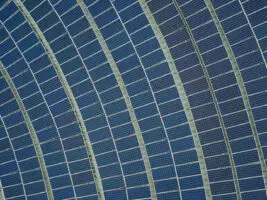Grid parity is a term that is often discussed and a goal that is often raised, but until subsidies are stripped away it is a concept that has not been tested – beyond some off-grid and island locations.
Where better to test it then, than in Spain, the country that did so much to support the deployment of wind and solar energy but which, thanks to the continuing fallout of its property crash, can no longer afford to pay energy subsidies, be they green, grey or black.
The German solar company Conergy last week highlighted what it said was its first “grid parity” solar installation in Spain. Other, larger installations have been talked about, but have yet to be financed, this installation is only 8kW, installed on the roof of an organic restaurant in Barcelona, but for the solar industry it’s an installation that highlights the fact that the game has now changed from an investment driven market to a genuine energy market.
This is occuring not just in Spain, but elsewhere. Italy, which enjoyed the highest deployment of solar in 2010/11 with more than 9,000MW, is just about to reach its €6.7 billion budget for solar support. Still, the government expects that between 1GW and 2GW of solar PV will be installed each year, even without any subsidies. That is a figure that is likely to grow.
The two key takeaways from the Barcelona installation are this: The restaurant owner normally pays around €0.15 to €0.17 /kWh for his electricity (about 19c-21.5c/kWh), and Conergy says the restaurant will pay €0.101/kWh ($12.7c/kWh) for solar – based on a levellised cost of energy over 25 years.
Those are interesting numbers in the Australian context. The first is that solar PV can deliver parity in a country where retail prices are about 25 per cent cheaper (or more in some cases), than in Australia.
The second is that they can deliver solar PV on rooftops at a cost of just under 13c/kWh. That’s probably half the price in Australia – and it’s mostly got to do with the balance of system costs than it has to do with the price of panels. In Australia, those balance of systems costs are about twice the price of the panel.
Getting those balance of system costs down is the primary goal of the US SunShot Initiative – which wants them at 50/50 by 2020, and in Japan, where balance of system costs are about four times the cost of the panel. This is why the
Japanese, having duly noted the experience in Europe (and in Australia), have decided on a generous feed in tariffs of around 52c – with the simple goal of getting enough solar deployed to lower the cost of installation. They don’t have Productivity Commissions obsessing about the “abatement cost” of the tariff because that is not the point of it.
Conergy says the Barcelona restaurant, La Sal Varador, will source 95 per cent of its energy needs from the 34 panels during the day. No payment will be made for any energy exported back into the grid. “The conclusion is simple,” it says. “Solar is a cost-effective choice without subsidies in cases where a substantial amount of power is required during the daytime.”
Luis Jiménez Gutierrez, the head of Conergy Spain, says the move of solar towards a genuine energy market means that the important criteria are now the availability of electricity and the price of every kilowatt hour. “The objective is no longer for the plant to be as large as possible, but for it to be matched precisely to the customer in order to optimise electricity generation and consumption behaviour.”

This will have some resonance in Australia, which is on the point of making that transition to an investment driven market to a genuine energy market. In the commercial sector, there is now even talk that manufacturing plants that once operated at night to take advantage of lower prices may now be able to transfer operations to the daytime, supported by solar.
And in the residential market, there are now broader discussions about whether solar PV should be pointed north to generate as much energy as possible, or oriented more towards the west, so it can be more focused on reducing peak demand, which is essentially driven by households.
There is now an understanding that offering no tariffs, a static tariff or a time of use tariff will achieve different results. Solar will ultimately be attractive in all of them. The utilities are still trying to figure out which is best for them. How this unfolds will largely dictate the course of the energy industry in this country over the long term.
Other news:
The pace of solar development overseas is quite extraordinary. Last week, Saudi Arabia, which has already begun a $100 billion program to install 42,000MW of solar over the next 20 years, says it aims to cease generation of electricity of oil and gas and generate only low or zero carbon energy – solar, wind and nuclear. Meanwhile, China is introducing new rules that will accelerate the connection of solar PV plants of less than 10MW to the grid, and Iraq has unveiled a $1.6b renewable energy plan to add at least 400MW of wind and solar to to the national grid.
In Chile, approval has been given for another two large-scale solar PV projects totalling 288MW to be built in the northern Antofagasta region. In Hawaii, SolarCity will build a 14MW solar PV plant on the island of Kaua’i to provide 6 per cent of its average daily energy needs, a new 10MW solar PV plant will be built in western Japan by Eurus Energy, with construction starting next month, and Sky Solar has broken ground on a 50MW PV project. In Hainan Tibetan Autonomous Prefecture.







